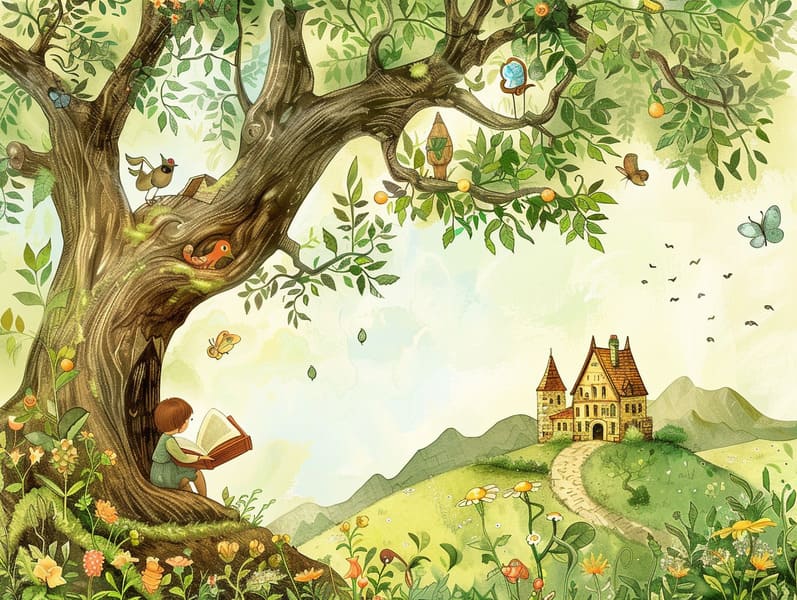The Creation of Traditional Fairy Tales and the Unending Loveliness.
The Creation of Traditional Fairy Tales and the Unending Loveliness.
Blog Article

Traditional fairy tales have ancient roots. These narratives have been shared from one generation to the next far before they were ever transcribed. They arose from a variety of societies, including Eastern traditions. They were initially shared among mature audiences, often carrying themes and messages related to the societal norms and beliefs of the time.
The famous Grimm duo, the two Grimm brothers, were among the first to collect and release many of these beloved fairy tales. Their published works, "Grimm's Fairy Tales," included classics like "Cinder Maid," "Hansel and Gretel," and "Little Snow White," which have since become hallmarks in the world of traditional fairy tales. Similarly, Hans Christian Andersen's charming fairy tales, such as "The Mermaid," and "The Ugly Duckling," have won hearts worldwide, establishing their place in the pantheon of iconic fairy tales.
Despite their age, fairy tales remain as applicable as ever, especially as kids' bedtime tales. These enchanting tales are now available in many formats, including gorgeously illustrated books, charming animations, and digital fairy tales.
Their ongoing significance can be credited to several whimsical characteristics:
Important Morals: Old fairy tales often impart important moral lessons. Stories like "The Wolf and the Liar" teach the virtue of being truthful, while "The Race of the Tortoise and the Hare" show the virtues of steadfastness and unassuming nature. These stories offer young ones clear distinctions between virtue and vice, guiding their moral compass in a gentle yet significant way.
Warmth and Understanding: Fairy tales frequently include heroes facing challenges and struggles, inspiring audiences to identify with their struggles and support their triumphs. For instance, "Beauty and the Beast" conveys the significance of valuing inner qualities to understand the real person of a person, fostering insight and appreciation.
Cultural Insights: Many traditional fairy tales are steeped in the cultural contexts from which they sprang. Delving into these stories can provide fascinating glimpses into different customs, developing a sense of world respect and discernment.
Fantasy and Innovation: The extraordinary elements in ancient fairy tales—talking beasts—activate children’s fantastical thinking. These stories lead readers to fantastical realms, revitalizing inventive dreams and a sense of enchantment that remains a lifetime.
Ancient fairy tales are not only enchanting but also enlightening. They work as charming tools in promoting various mental and emotional abilities in young ones. When fairy tales are narrated, they enhance communication skills by introducing new word meanings and sophisticated sentence structures. This practice also improves hearing abilities and concentration, as young readers remain attentive, eager to see what happens next.
Furthermore, deliberating the themes and characters of fairy tales can sharpen thought processes and cognitive skills. Little ones are instructed to notice patterns, make predictions, and grasp cause and effect. These contemplations also encourage young readers speak out their thoughts and feelings, advancing their emotional intelligence.
In today’s high-tech era, the existence of free fairy tales online has made these fairy tales more available than ever. Online platforms and software share large libraries of classic fairy tales that can be explored or listened via anytime, anywhere. Fairy tales narrated are particularly favored, sharing an delightful method for children to enjoy these enchanting tales. Audio stories and read-to-me videos guide characters and settings to life, often click here complemented by whimsical audio effects and background music that enrich the tale-telling adventure.
The lasting allure of traditional fairy tales lies in their ability to change to present eras while maintaining their central messages. Contemporary takes of these narratives often bring in more representative protagonists and modern settings, making them relevant to today’s audience. However, the key lessons of heroism, compassion, and equity remain unchanged, continuing to reach readers of all ages.
Old fairy tales also offer a sense of comfort and closeness. They provide a well-structured narrative with a plain beginning, middle, and end, often drawing to a close with the culmination of conflicts and the triumph of right over wrong. This dependability can be easing for young ones, delivering a sense of constancy in an fluctuating world.
Old fairy tales continue to bewitch and inform new generations, maintaining their magic and value in modern society. As nighttime stories for kids, they share a perfect blend of captivation and insight, nourishing moral values, empathy, and creativity. The existence of web-based fairy tales and the in demand status of fairy tales spoken validate that these classic narratives remain accessible to new generations.
By conserving and sharing these narratives, we continue to esteem the rich tapestry of myths and cultural heritage. Whether you are experiencing a vibrantly illustrated book, discovering a web-based collection, or listening through an narrated book, the wonder of old fairy tales is always within reach. These tales remind us of the steadfast impact of stories and its ability to hold us together across eras and regions.
If you are viewing a richly illustrated book, viewing a web collection, or listening through an voice book, the grace of popular fairy tales is always within reach.
These stories show us of the unwavering influence of narratives and its ability to bond us across centuries and lands, forming a connection that enchants and educates alike.